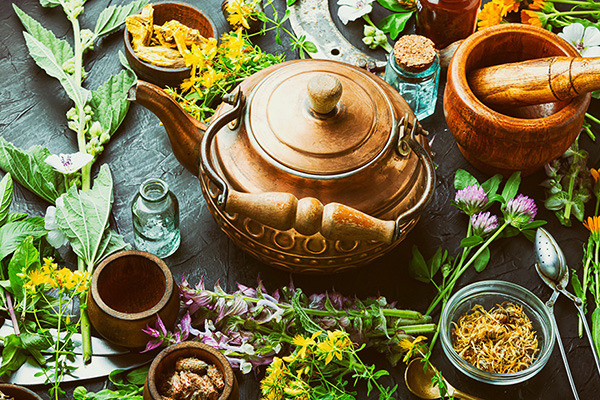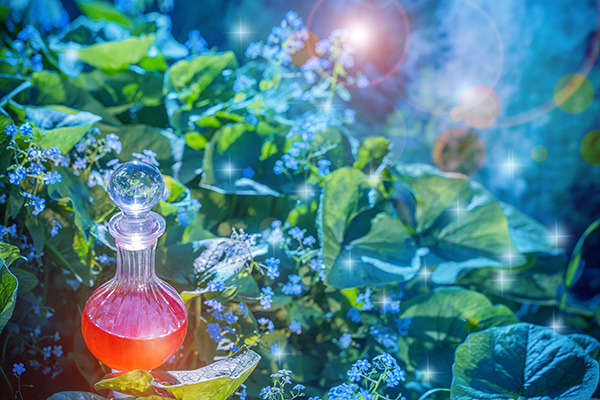healer
Raising An Old Soul
 We have more people on the planet now than ever before. That means we have more old souls, and more new ones. Many parents are raising old souls and are struggling with how different it is from the information in all of the parenting books and blogs out there.
We have more people on the planet now than ever before. That means we have more old souls, and more new ones. Many parents are raising old souls and are struggling with how different it is from the information in all of the parenting books and blogs out there.
If your child is an old soul, which is one who has lived many past lives, they probably were your parent at one time. On some level they know and remember this and may challenge your authority, and change in roles. Thus, the power struggle so many parents go through.
I have been working with children for decades and have had many of them tell me their past life stories. I’ve heard, “I used to be a princess” and “I used to have a sister” or “My mom says we’re not having another baby, but I know I have a little brother coming!”
I’ve also had children tell me how they died in another life or how their mom isn’t their “real” mom. One boy told me he remembered being born. He remembered leaving the light and coming through a tunnel. It was a difficult decision to come back to Earth.
Another gifted child I worked with was able to find lost items, when his parents asked him where something was that had been misplaced. Just the faith that they had in him and the unquestioning belief that he could find these items helped him open up an invaluable gift that will serve him and others in life. Old souls also tend to have unusual or extraordinary gifts, talents and interests which should be nurtured for the greater good.
The Modern Practice Of Spiritual Healing
 In a world driven by science and technology, the value of our spiritual health is rarely recognized or appreciated these days, yet it is an essential aspect of our holistic health and well-being.
In a world driven by science and technology, the value of our spiritual health is rarely recognized or appreciated these days, yet it is an essential aspect of our holistic health and well-being.
The truth is that spiritual healing has been practiced since the beginning of time to promote physical, emotional, mental and spiritual well-being. Our ancestors were much wiser in this regard. They had a holistic view of health and wellness that not only focused on the physical and mental, but also honored the spiritual or metaphysical aspects of our existence.
In ancient Egypt, for example, illness was treated as a battle between good and evil, and magical remedies were used in addition to herbal medicines. In ancient Greece, holism underpinned everything, and the soul, mind, and body were considered one.
In Traditional Chinese Medicine, a holistic system practiced for at least 23 centuries, healing is achieved by balancing the yin-yang life force energies that permeate everything in the universe. In the indigenous healing traditions of Native America, holistic health is represented by the four quadrants of the ‘medicine wheel’ or ‘sacred circle,’ namely the physical, emotional, mental, and spiritual states of being.
In Christianity, spiritual healing is documented with many references to the healing power of faith and prayer. The Bible also refers to the spiritual gift of healing, and there are several accounts of Jesus performing miraculous healings. In Hinduism, Ayurveda is a five-thousand-year-old Vedic system of medicine that seeks to restore the balance between the body, mind, and spirit.
The Basics Of Reiki
 Reiki is popular concept in modern spirituality, metaphysics and energy healing. It is therefore good for anyone interested in these fields to have a basic understanding of this technique to engage in discussions with likeminded people in a meaningful way.
Reiki is popular concept in modern spirituality, metaphysics and energy healing. It is therefore good for anyone interested in these fields to have a basic understanding of this technique to engage in discussions with likeminded people in a meaningful way.
The term reiki is a combination of two Japanese words. Rei means ‘divine wisdom’ or ‘divine power,’ and ki means ‘life force energy’ or ‘vital human energy.’ Reiki is therefore a ‘divinely empowered life force.’
Reiki, or rather the system of Reiki, was developed in Japan a century ago by a Buddhist monk known as Mikao Usui. He was a renowned spiritual man who dedicated his life to being of service to others. While seeking spiritual awakening on Mount Kurama, north of the Japanese city of Kyoto, he was divinely inspired with the gift of Reiki. It was introduced to the United States in the late 1930s by Hawayo Hiromi Takata, a Japanese-American woman who received training in Reiki in Tokyo and became a master practitioner.
Although it is more commonly known only as a form of energy healing, true Reiki is in fact a comprehensive spiritual practice and a conscious lifestyle. Yes, it involves the healing of the mind and body, but it also proposes living in total peace with oneself, and being aware of your own unique purpose and spiritual light within. The system of Reiki seeks to remove the layers of fear, worry and attachments that conceal our innate brightness of being.
Miracles Happen Every Day
 I’ve been very blessed in my work to hear so many people’s stories. Often in my yoga class, we take time for people to share their personal miracles and spiritual experiences. I’ve also had people tell me about miracles that have happened to them throughout their life, privately and in psychic readings.
I’ve been very blessed in my work to hear so many people’s stories. Often in my yoga class, we take time for people to share their personal miracles and spiritual experiences. I’ve also had people tell me about miracles that have happened to them throughout their life, privately and in psychic readings.
One of my clients told me about the day she was sitting in her parked car with the window down. A young man suddenly came up to her and put a gun to her head. He demanded she give him her wallet. Then the gun accidentally went off, she believes, while it was pressed right up against her temple.
She instinctively closed her eyes when she heard the click of the trigger and the blast of gunfire. But then she opened her eyes and was still very much alive! The gun was still pressed up against her temple. She turned and looked at the young man, who had a terrified look of shock on his face. He immediately ran away.
Something had prevented that bullet from hitting her. When she called the police, she actually started wondering whether she might have imagined the gun going off at all? When we have time to think about something we tend to rationalize, and we may begin to think that perhaps we are delusional or making something up. However, the police did find a bullet hole in the side of her passenger door!
A student once told me that she had lost the diamond in her wedding ring. She was devastated and looked all over the house, at work, and even in her car…everywhere she could think of. She spent over a month looking for it, intentionally not vacuuming her car or house.
The Empowering Symbolism Of The World Card
 The World card in the Tarot remains one of my firm favorites. I am all for personal and spiritual growth, the completion of cycles, and new beginnings. The World represents exactly that: the ending of a cycle and pause in life, before the next major cycle begins with the fool.
The World card in the Tarot remains one of my firm favorites. I am all for personal and spiritual growth, the completion of cycles, and new beginnings. The World represents exactly that: the ending of a cycle and pause in life, before the next major cycle begins with the fool.
The journey from the new beginnings of The Fool to the fulfilling endings of The World is a constant evolutionary process in our everyday lives that is represented by the sequence of the 22 Major Arcana cards of the Tarot. The World is the 22nd trump and therefore final card of the Major Arcana.
I have reflected on the imagery of the Rider-Waite version of this Tarot card in great detail. Rider-Waite is probably the most popular and universally recognized Tarot deck. The illustrations by Pamela Colman Smith at first glance appear simple, but the details and backgrounds feature abundant mystical symbolism.
The World pictures an empowered figure within a wreath – traditionally a symbol of victory, success, achievement, and eternal life. The figure holds a wand in each hand, which is reminiscent of the Magician card and the Two of Wands. However, while The Magician holds only one wand, the two wands in the The World card represents fulfillment, wholeness, balance and coming full circle.
The card is framed by four animals on the diagonal. The depiction of these four creatures parallels the four animal symbols used in Christian art to represent the four Evangelists, namely Matthew, Mark, Luke, and John. The four animals also represent the zodiac signs of Taurus, Leo, Scorpio, and Aquarius, the four fixed signs in Western Astrology, which in turn represent the classical four elements of Earth, Fire, Water and Air.
Developing Your Herbal Intuition
 Herbal medicine is becoming increasingly popular, and many people are increasingly turning to herbalism as a healthcare supplement, or even a substitute to conventional pharmaceutical medicine. Plants, flowers, and herbs all have unique energetic qualities that make them suitable for various purposes. They are alive and respond to their environment and how they are treated in the same way humans do.
Herbal medicine is becoming increasingly popular, and many people are increasingly turning to herbalism as a healthcare supplement, or even a substitute to conventional pharmaceutical medicine. Plants, flowers, and herbs all have unique energetic qualities that make them suitable for various purposes. They are alive and respond to their environment and how they are treated in the same way humans do.
When we think of herbs, we tend to narrowly categorize them according to the medical conditions they can be used for, or what aspect of our health and wellness they can improve. However, like people, herbs are much more complex and multi-faceted, and have many uses and applications, alone or in combination with other herbs.
To obtain the most benefit from any herb, we need to take the time and have patience to truly get to know the herb. When you meet someone for the first time at a social event, would you diminish the other person’s true worth by instantly deciding they have only one useful trait or redeeming quality, and leave it at that? Taking the time to get acquainted with a particular herb is much like getting to know someone in an intimate friendship.
Selecting herbs to work with or draw upon for healing is a highly intuitive process. The appearance, aroma, taste, texture, and energy vibration of the ideal herb for a specific purpose must speak to us mind, body, and soul. They convey a distinct energy signature and frequency of healing that the intuitively aware user will innately know is best to use at that time.
The Healing Energies Of Plant Spirits
 Here in Latin America there is a rich tradition of herbalism and ceremonial, shamanic spiritual medicine. There has also been in recent times a global revival of plant medicine and natural healing practices, as well as a renewed interest in related indigenous wisdom traditions found in many cultures all over the world.
Here in Latin America there is a rich tradition of herbalism and ceremonial, shamanic spiritual medicine. There has also been in recent times a global revival of plant medicine and natural healing practices, as well as a renewed interest in related indigenous wisdom traditions found in many cultures all over the world.
As a result of modern science, we have largely abandoned and forgotten the fountain of knowledge the aborigines had regarding healing and natural harmony. It took us several centuries to realize what we have lost and overlooked in the process.
Herbalism is however not only about natural medicine potentially having fewer side effects than modern pharmaceuticals. It is also about the innate energetic qualities we share with a particular plant. This approach to healin stems from a worldview that fully integrates man and nature.
In local tradition, near the Andes, the timing is just as important as the type of plant used for healing purposes. Depending on the season, or the phase of moon, for instance, the plant’s properties will vary, and its effectiveness less than optimal if used at the inappropriate time.
Both the healer and their patient’s attitude towards the plant itself is also an important factor in the healing process, as the respect and gratitude shown to the plant will determine its healing ability.
In shamanic herbalist practices it vital to understand that all entities are considered to have elemental energy, including plants and humans. This is the metaphysical premise of all plant medicine and magic. In fact, for the traditional herbalist all plants have spirits. And each one has specific faculties and properties at different levels or frequencies that can heal us in mind, body and soul.